Andy Tucker – Harry Cooke’s Right-hand Man
When Everton’s assistant trainer, Bertram Smith, was tragically killed in June 1929, the club's search for a replacement led them to a Plymouth-born former Olympics coach and he would spend a decade with the Toffees
Andrew John Dignam Tucker, known by all as Andy Tucker, was born in Plymouth on 30 January 1894 and grew up with his parents, John (a labourer) and Sarah (née Dignam) at 46 Ashford Road in Plymouth, Devon, England. He was educated at Charles School for Boys. The 1911 census has the teenage Andy employed as an errand boy for a local green grocer’s business.
He emigrated to Canada in the early 1910s - family legend has him working as a Mountie and/or a lumberjack – but returned to Britain before very long. With the First World War underway, he enlisted in 1915 with Canadian Engineers section of their Overseas Expeditionary Force (his papers showing his given occupation as a butcher). His army records show him as a specialist in bayonet practice and physical education (PE) training. He saw service in Britain and France, marrying Sarah Chapman in 1915 in Folkestone, having met her in a queue in a post office in Margate. The couple went on to have two children, Andrew John Jr. (known as Jack) and Ivy.
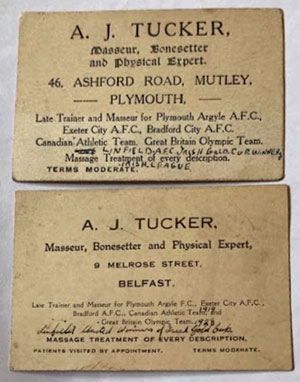
Business cards from the 1920s
After being de-mobbed in August 1919, the former sergeant began his career in football training with hometown club Plymouth Argyle, switching to Southwest rivals Exeter City two years later. One newsworthy episode came in November 1925 when the grandstand caught fire. Andy raised the alarm, but it came too late for the fire brigade to prevent the inferno from swiftly enveloping the structure. Andy was affected by the fumes and received first aid from the ambulance in attendance. He was dismissed by the Grecians in the spring of 1926, to the shock of supporters. This came not long after him turning down an approach for a leading club in the South of England. One irate follower, who signed himself off as One Who Loves Fair Play, lamented the sacking in the local newspaper, citing the coach’s experience, ability and long hours put in every day.
A few months later, Andy headed north to continue his career in sport, appointed as first team trainer at Bradford City. His time at Valley Parade was followed by a stint with Belfast club Linfield, whom he joined in the autumn of 1928. The Blues won the Irish Gold Cup in his short time there. In addition to his club work, by this point Andy was in private practice, his business card describing him as a ‘masseur, bonesetter and physical expert.’
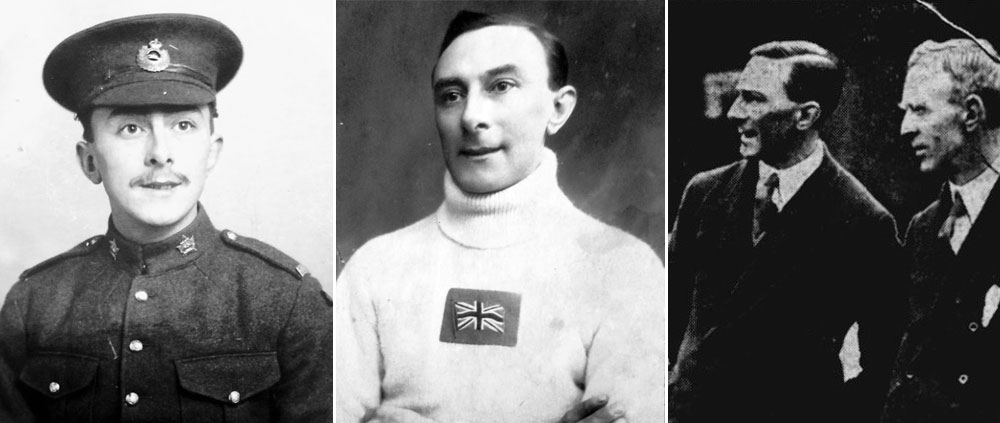
Left: On military service in WW1; Middle: Olympic Coach in 1928; Right: Andy at Linfield in October 1928
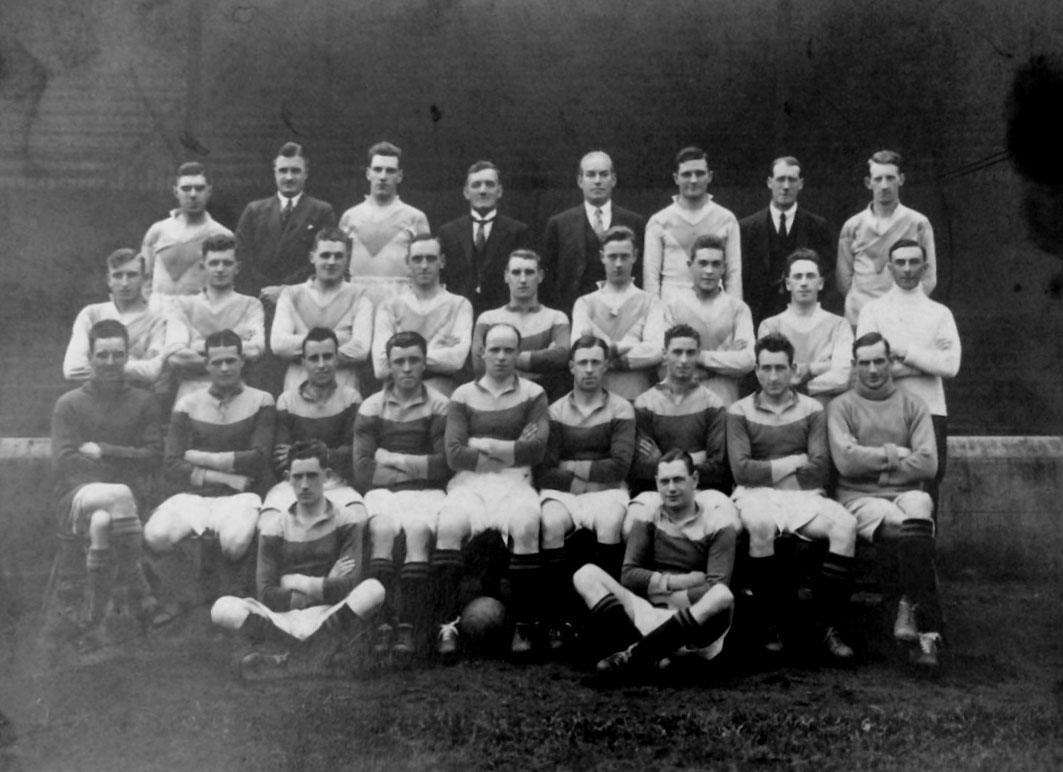
As a coach at Bradford City (far right on 2nd row from back)
Having been a member and coach of the Canadian forces gymnastic team during his war service, he attended the 1928 Summer Olympiad in Amsterdam as a swimming trainer to the British team. According to his daughter, he also assisted Johnny Weissmuller, the Austria-Hungary-born naturalized American, with his training. The swimmer, who would become famous in the title role in the Tarzan film series, won gold in the pool in the 100m freestyle and the 200m relay.
The death of Everton’s assistant trainer Bertram Smith in June 1929, the result of a motorcycle accident, forced the club to begin the search for a replacement (a £25 gift was given to his Smith’s widow). 122 applications were received, whittled down to a shortlist of four for interview in early August. Andy impressed the panel and was appointed in early August. The role would entail working alongside supporting Harry Cooke, the first team trainer, and also coaching the reserve (Central League) side. He would also treat minor injuries and carry out massage on tired and strained limbs. Described in the Liverpool Echo as ‘an athletic personality’ the new trainer was given a weekly wage of £5. Incidentally, Everton’s future secretary-manager, Theo Kelly joined the club at the same time, when appointed to oversee the A team.
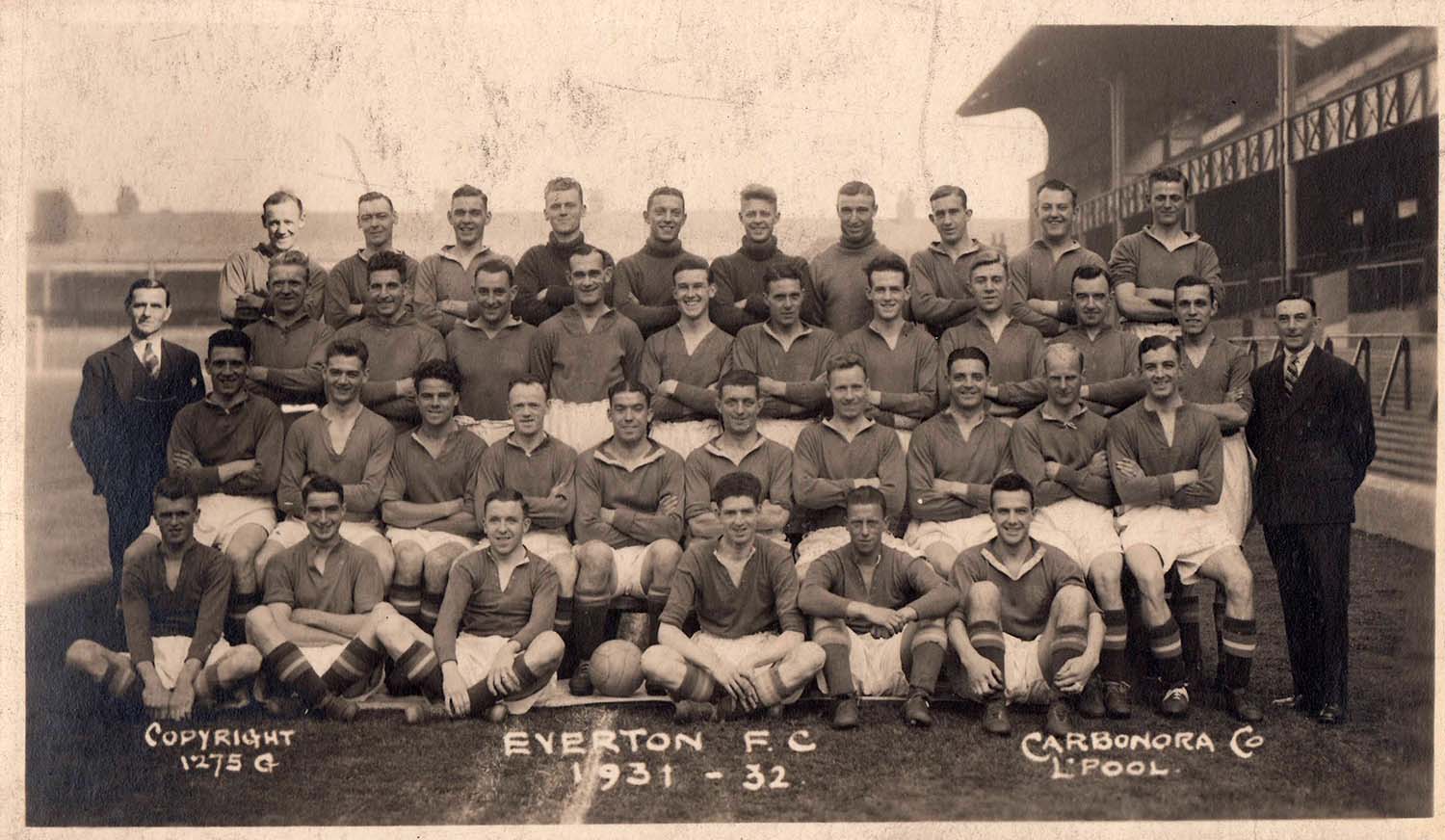
Everton 1931/32 squad with Andy on far right
The Tucker family would be housed in a club house, 28 Goodison Avenue, the street backing onto the Park End stand. When Everton won the FA Cup in 1933 – Andy’s career highlight - turns were taken in having the trophy overnight. So, one evening it came home to the Tucker’s household.
In spite of his important role as a trusted lieutenant to Harry Cooke (sometimes accompanying him to coaching courses and conferences, and also assisting when international fixtures were staged at Goodison) and in developing players in the reserve side, Andy’s media profile was relatively low. However, he was mentioned in the Liverpool Echo in 1935 when officiating a charity match at Breck Park greyhound stadium between English Ladies (actually Preston Ladies, formerly Dick, Kerr Ladies) and a French XI. Dixie Dean — who Andy got on well with — was present for the kick-off, to add a sprinkling of stardust to the occasion.
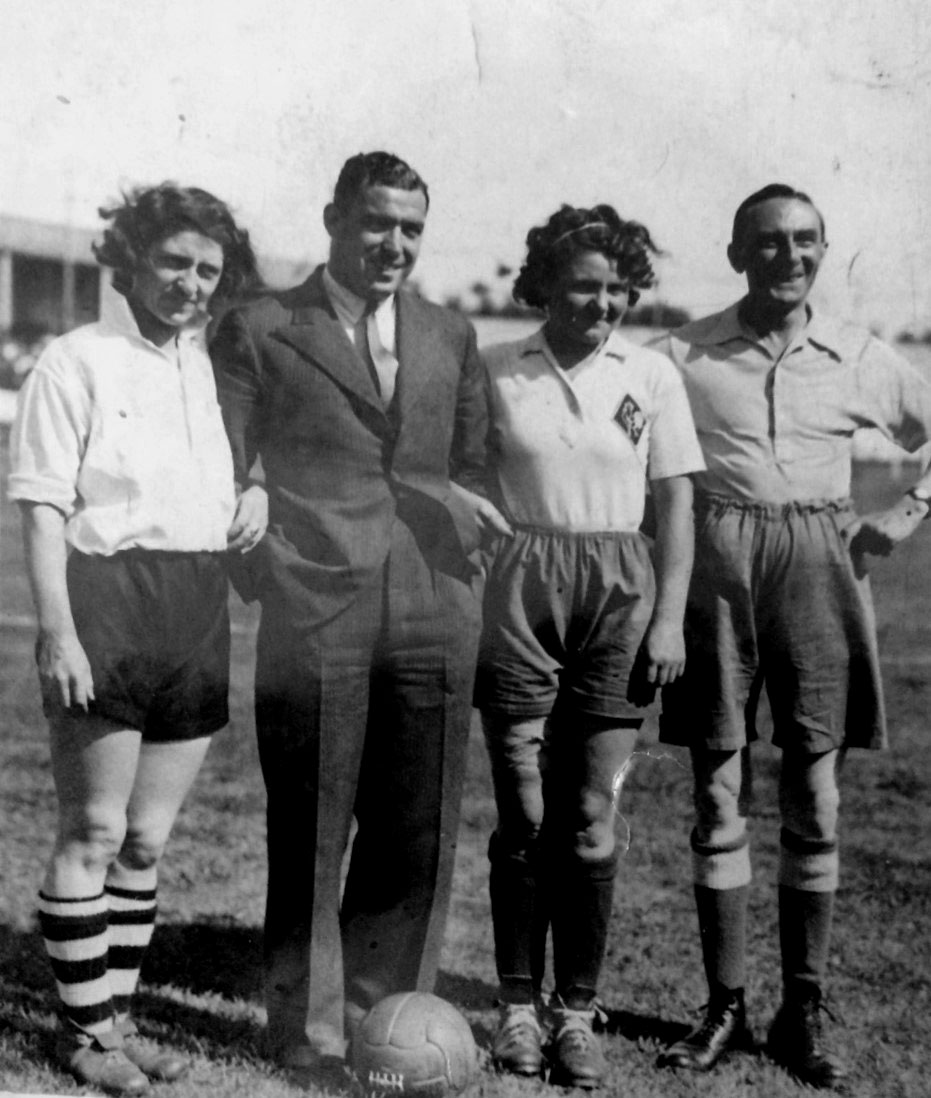
Officiating a women's football match in 1935
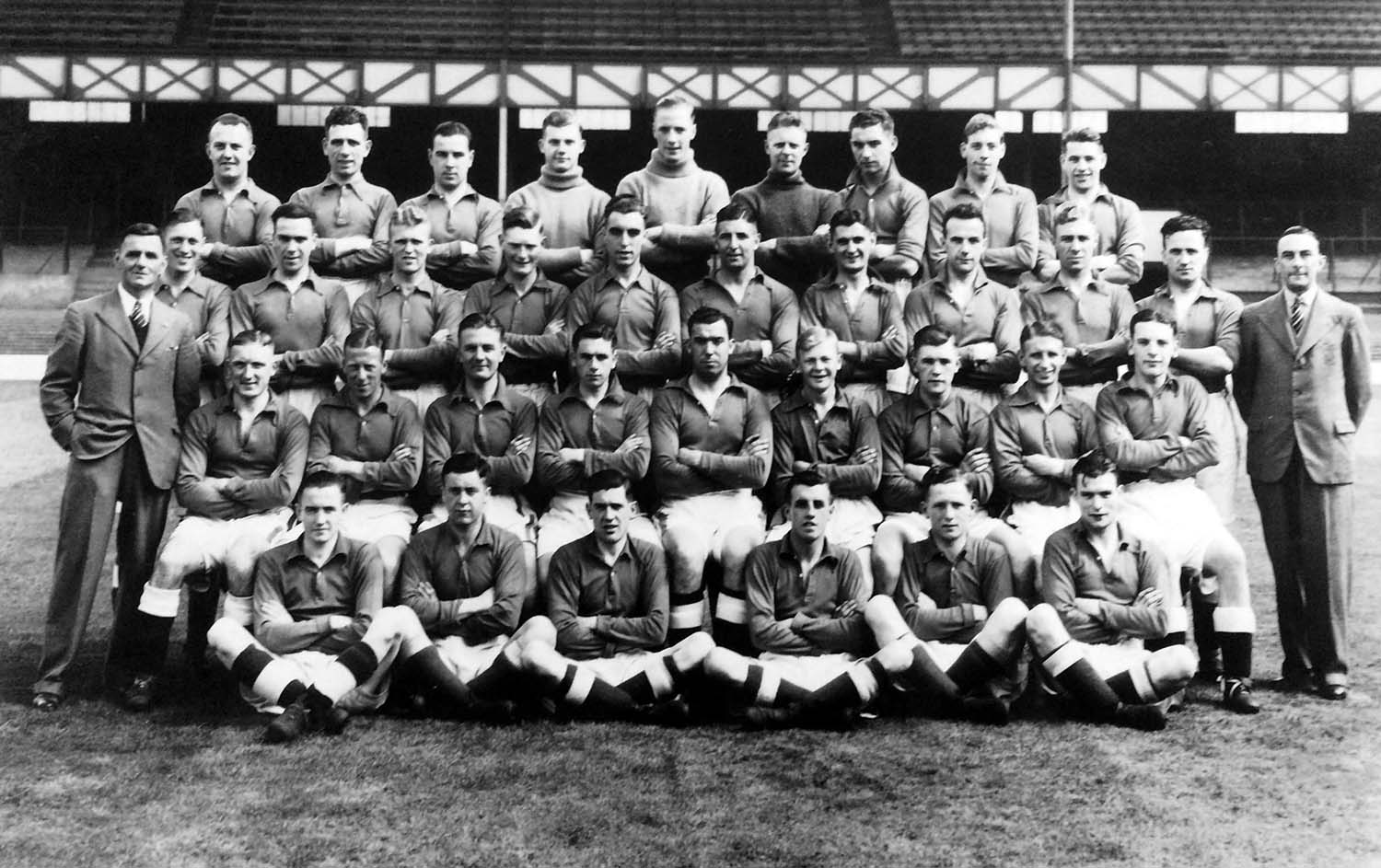
Everton's 1936/37 team
One of Andy’s great achievements was overseeing the reserve team winning the central league in the 1937/38 season — he was helped by having Dixie Dean in the side for much of the campaign prior to his departure to Notts County. In a break from tradition, the club sought clearance to have a medal struck for the trainer, in addition to the players — a measure of the esteem in which he was held in Goodison’s corridors of power. Board minutes indicate that he also carried out some scouting duties for potential signings.
On a personal level, Andy and Sarah were teetotalers and were close to the Salvation Army movement. He was never a gambler - when the Grand National came round each year, he would put his money on the mantelpiece before the steeplechase and pick it up afterwards as his ‘winnings’.
Days after war was declared on Germany in September 1939, Andy ushered the players off the pitch when he heard an air raid siren. On this occasion, it was a false alarm — it would be some months before bombs rained down on Liverpool. With the regular football programme suspended, Andy left his regular employment with the Toffees, but continued to rent Goodison Avenue for the rest of his life. He became a chiropodist, working from home - a natural move for someone who had spent years helping to keep the feet of players in good order. The front room was his workplace and in the middle of it was his chair set on a raised platform. He was highly regarded in this profession.
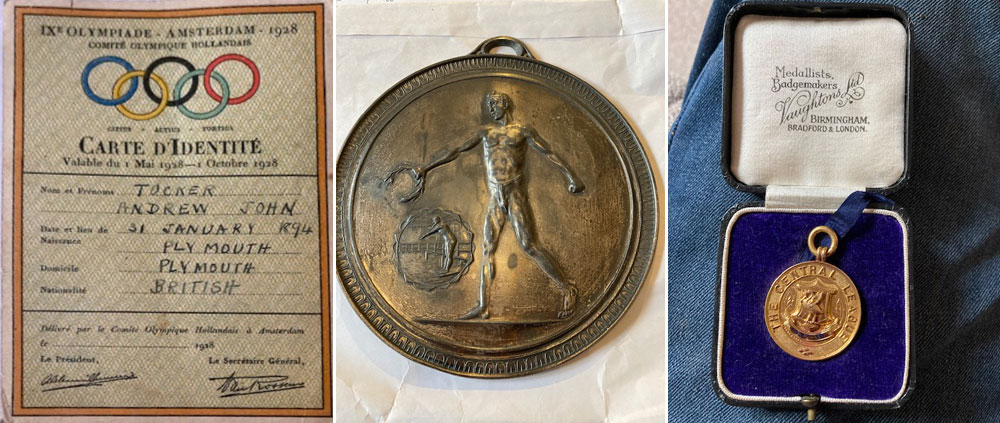
Left: Olympic ID Card, 1928; Middle: Medal from 1928 Olympics; Right: Central League winners medal, 1938
When Ivy got married, she initially shared 28 Goodison Avenue with her parents before moving to a house very close to Anfield stadium. While still living on Goodison Avenue, for a small fee, Ivy would also look after supporters’ bicycles stored in the back yard when Everton had a home fixture. There was an extra charge for anyone wishing to use the outhouse WC. The toilet paper was usually ripped from pages of the Echo! Years later, her sons Rob and Brian would ‘mind’ the parked cars of Anfield spectators (for sixpence).
Rob Mitchell adds: ‘I have a lot to thank my grandfather for, not just my interest in football. What I really owe to him is that, born with club foot to both feet, he pushed for me to be treated at The Northern Hospital when the NHS began in 1948. From then until aged about 15, I had operations to rectify this condition. In my life I have been able to run, play football, cricket, swim, play squash and even ski - none of which would have been possible without his support in my early years.’
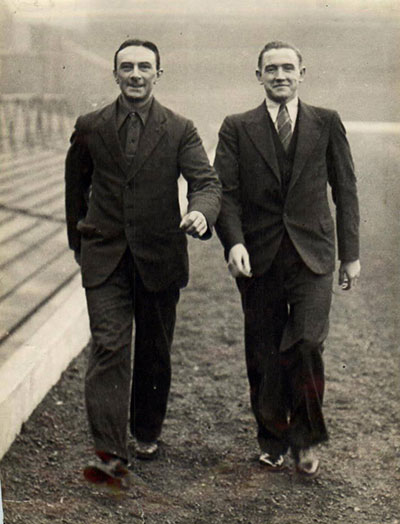
Striding at Goodison Park alongside winger Jack Coulter, circa 1935
Andy Tucker passed away at the age of 71, on 1 March 1965 at Newsome Hospital, having been taken ill a fortnight earlier. Harry Cooke, his old friend from the Goodison Park training pitch, was also receiving treatment there at that time, having had to have both of his legs amputated. Andy was cremated at Anfield Cemetery. In time, Sarah moved into a care home close to where County Road meets Queens Drive and eventually died there. Not long after this, Goodison Avenue was demolished to make way for the Park End car park. Andy’s daughter Ivy, and her husband Harry — an Evertonian — had their ashes scattered in the remembrance garden at St Luke’s church, next to Goodison Park.
For further reading on Everton during Andy Tucker’s time at the club, please seek out my Toffeeopolis book, Broken Dreams: Everton, the War and Goodison’s Lost Generation.
Acknowledgement
Sincere thanks go to the Tucker/Mitchell family, notably Rob and Brian Mitchell, for sharing information about, and images of, Andy.
Other sources
Bluecorrespondent.co.uk
Find My Past
Reader Responses
Selected thoughts from readersAdd Your Thoughts
Only registered users of Evertonia can participate in discussions.
Or Join as Evertonia Member — it takes just a few minutes and will allow you to post your thoughts on artices across the site.


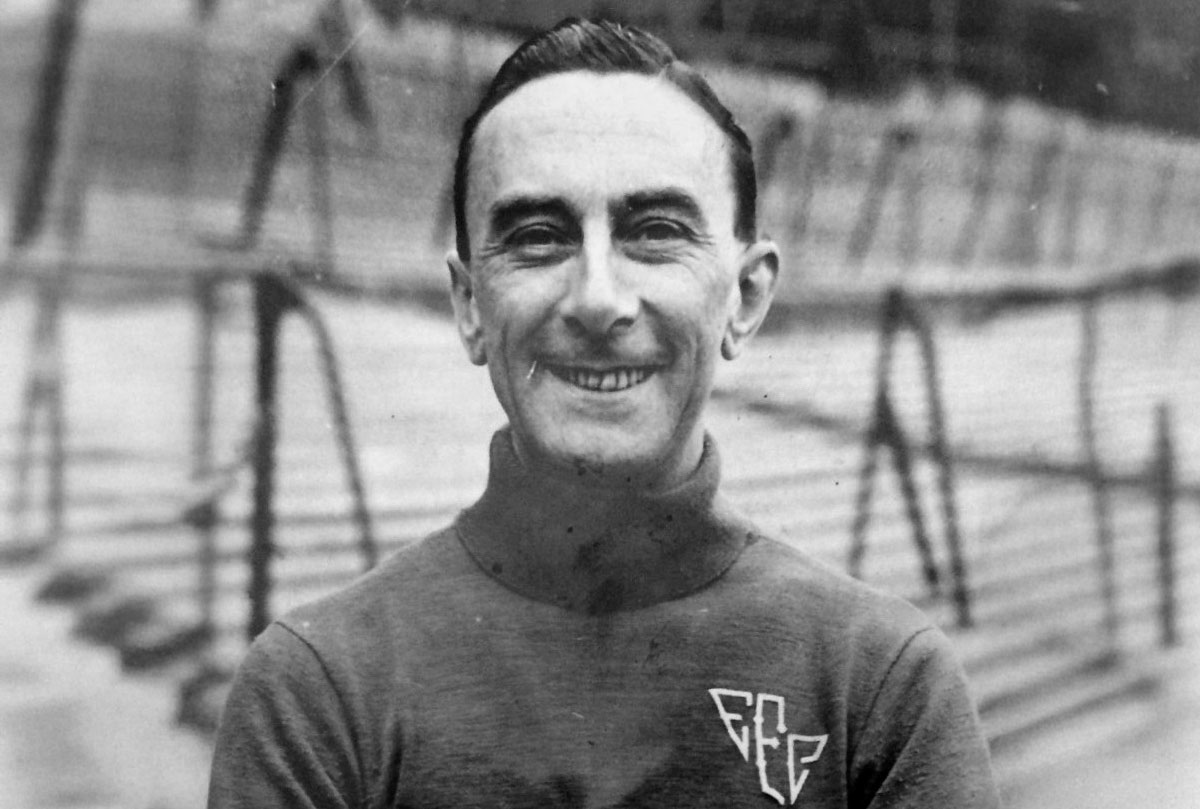
13/03/2025 04:00:01
Rob,
I don't know that I've posted on your columns even 3 times over all the years. But I always read and enjoy them.
Thank you for doing all this work. Great read!